Festival des Arts de Corée 2025 (2025 대한민국 미술축제)
1.6Km 2025-07-31
57, Daehak-ro 5-gil, Jongno-gu, Seoul
070-7575-0980
Hanok Guesthouse Dongchonchae / 한옥 게스트하우스 동촌재
1.6Km 2025-08-12
21-10, Jahamun-ro 11-gil, Jongno-gu, Seoul
Built in 1939, Dongchonchae was designated as Seoul Well Hanok by the Seoul Metropolitan City in 2016. In 2020, this hanok (traditional Korean house) received the Certificate of KOREA QUALITY from the Korea Tourism Organization in the Heritage Hanok field in recognition of its historicity and quality of services. Dongchonjae is located in the western side of Gyeongbokgung Palace, at Seochon. When one passes through its main gate, one sees the yard, with anchae (women's quarters), sarangchae (men's quarters), and byeolchae (detached quarters) surrounding the plot. Anchae has four rooms, daecheong (wood-floored main hall), a kitchen, and a restroom. One of the rooms is used for tea ceremonies as well. Outside of the sarangchae and byeolchae, which are the living spaces for the owners, visitors have free access to the numaru (raised open floor) and the yard. The anchae’s rooms “Bom” and “Yeoreum” can accommodate 2 to 3 adults each, while the rooms “Gaeul” (Tea Room) and “Gyeoul” are optimal for two. The building is rented out as a whole, so no more than one group may stay in the building at any given time. Standard occupancy is four persons, and eight is the maximum number. There are two restrooms, one within the anchae building, one out in the backyard.
Cooking is not allowed in the kitchen, but guests are free to bring in outside food. Experience programs on offer include nighttime exploration of Seoul City Wall, tea ceremony, folk songs, and rice cake making. Additional payment is only required for rice cake making. Guests may choose between two types of complimentary breakfast: Korean, which comes with rice, soup, and three side dishes; and Western, which comes with bread, salad, and coffee. There are a 100-in screen and mini projector for film watching in the yard or daecheong. Towels, toiletries, hair dryer, bottled water, traditional tea, and capsule coffee are included. The kitchen is equipped with kitchen utensils, a microwave, and a coffee pot, enough for instant foods. Guests also have access to refrigerator and washing machine
Cheongwadae Sarangchae (청와대 사랑채)
1.7Km 2025-08-20
45, Hyoja-ro 13-gil, Jongno-gu, Seoul-si
+82-2-723-0300
Cheongwadae Sarangchae désigne un espace pour en apprendre plus sur la culture coréenne et l'Histoire des présidents en Corée. Il est possible d'en apprendre plus sur les charmes du tourisme en Corée et sur les histoires secrètes de Cheongwadae.
Haepoong buwongoon Yoon Taekyoung daek jaesil (해풍부원군윤택영댁재실)
1.7Km 2020-04-14
28, Toegye-ro 34-gil, Jung-gu, Seoul
+82-2-3396-5843
Cette demeure a été
bâti en 1906, lorsque l’épouse de Sunjong, Sunjeong, nommée alors impératrice
dut s’installer dans le palais Changdeokgoong. Le matériel utilisé est le pin
rouge récupéré lors de la démolition du palais Gyungwoongoong. Située au 224,
Jegi-dong, Dongdaemun-gu, elle a été déplacée et conservée dans ce lieu.
Ca'del Lupo (까델루뽀)
1.7Km 2020-04-27
5-5, Jahamun-ro 16-gil, Jongno-gu, Seoul
+82-2-734-5233
Ca'del Lupo is an Italian restaurant, closely located to Paris Baguette in Hyoja-dong, Jongno-gu near Gyeongbokgung Palace Station. Though the restaurnat masters delicious homemade Italian cuisine on the inside, the exterior is wholly Korean. This unique combination of Hanok (traditional Korean house) style housing and Western foods is drawing a lot of people to Hyoja-dong. The great mix of both cultures can be seen in the sophisticated decorations and from the amazing food. The herbs they use are picked directly from the restaurant's personal garden. But to enjoy the atmosphere here, you will have to make a reservation far in advance.
Marché de Tongin (통인시장)
1.7Km 2022-12-13
18, Jahamun-ro 15-gil, Jongno-gu, Seoul
+82-2-722-0911
Le marché de Tongin a été crée en juin 1941 sous l’occupation japonaise. Après la guerre du 25 juin, le région de Seochong a connu une hausse de la consommation causée par la soudaine croissance démographique. Des boutiques et des magasins se sont créés sous forme de marché public.
Le marché public Tongin se compose de 75 restaurants dont principalement des restaurants et des magasins de banchans (petits plats d'accompagnements) qui livrent des produits frais : poissons, fruits et légumes. D’autres commerces de vêtements, chaussures et retouches sont présents sur le marché.
Rue de Cheongwadae (청와대 앞길)
1.7Km 2025-08-20
Gungjeong-dong, Jongno-gu, Séoul
+82-2-120
La rue de Cheongwadae a été créée avec l’instauration du gouvernement civil, et s’étend depuis le carrefour de Hyoja à Hyoja-dong jusqu’au carrefour de Palpan à Palpan-dong. En suivant la rue Hyoja depuis la station de métro Gyeongbokgung, vous trouverez le Sarangbang de Hyoja, une fontaine, un bosquet d’hibiscus, le hall Yeonmugwan, le pavillon Daegogak et le hall Yeongbingwan.
Le Sarangbang de Hyoja est un petit bâtiment composé d’un rez-de-chaussée abritant une exposition relatant les 600 ans d’histoire de Séoul, et d’un étage où sont exposés des cadeaux d’hôtes étrangers prestigieux. Les visiteurs peuvent se reposer dans le jardin de derrière. Au Daegogak se trouve un tambour offert au président Kim Yeong-san en souvenir de l’ancien tambour Sinmungo. Le hall Yeonmugwan est l’endroit où le personnel des services de sécurité s’entraîne aux arts martiaux. On y trouve également une citadelle en pierre naturelle, ainsi qu’un espace de repos. Derrière le bosquet d’hibiscus siègent l’ambassade du Vatican et le pavillon Chilgung.
Bordée d’arbres touffus et de parterres fleuris, la rue de Cheonwadae est l’endroit rêvé pour une belle promenade. La résidence présidentelle Cheonwadae (qui signifie « Maison Bleue ») se trouve juste en face de la porte Sinmumun du côté Nord du palais Gyeongbokgung, et la rue se termine sur la porte Chunchumun, où se trouve le centre de presse de Cheonwadae. Un peu plus loin, la rue Samchongdong-gil s’étend depuis la porte Chunchumun jusqu’à la porte Geonchunmun (porte principale du palais Gyeongbokgung). De nombreuses galeries de peinture y sont installées (galerie Gukje, galerie Growrich, galerie Hyundai, etc) , ce qui en fait un lieu de prédilection pour tous les amateurs d’art.
Haeunjae / 하은재
1.7Km 2025-08-12
68-10, Jahamun-ro, Jongno-gu, Seoul
Haeunjae (下隱齋), meaning “hermit’s residence,” is a hanok (traditional Korean house) residence located in Seochon Hanok Village, near Gyeongbokgung Station on Seoul Subway Line 3. It is dedicated to the ideal of “movies and rest,” and takes after the characteristic form of modern hanok with a small courtyard. The entire house is rented out at once, with a queen bedroom, kitchen, movie room, and two restrooms. Up to 4 guests can reserve the house, with each additional guest above the standard of 2 having access to additional bedding.
The movie room is furnished with a Bose sound system, beam projector, and screen, along with a mobile foot bath. The kitchen is equipped with a refrigerator, hand drip coffee maker, toaster, electric kettle, and utensils. A 10% discount is available for guests staying for more than 2 nights on weekdays, and towel replacement and cleaning services are offered for guests staying for more than 3 nights.
The residence is located close to tourist sites like Tongin Market, Gyeongbokgung and Changdeokgung Palaces, and Samcheong-dong area.
Jinhyang Jokbal (진향족발)
1.7Km 2021-03-19
231-1, Jong-ro, Jongno-gu, Seoul
+82-2-745-5533
A pig's trotter(s) specialty restaurant located near Jongno 5(o)ga Station in Seoul. One of the top 5 jokbal (pig's trotter) restaurants in Seoul. This restaurant's signature menu is braised pigs' feet.
Seoureseo Duljjaero Jalhaneunjip (The Second Best in Seoul) (서울서둘째로잘하는집)
1.7Km 2020-06-16
122-1, Samcheong-ro, Jongno-gu, Seoul
+82-2-734-5302
The delicious, sweet, red-bean soup called “Danpatjuk” in Korean and served at “The Second Best in Seoul” has been an all-time favorite since it opened in 1976. Not only the exterior, but the interior as well, is very simple and modest, similar to a teahouse in the '70s. This does not keep people from coming back because the unforgettable taste of the sweet red-bean soup makes them return again and again.
“The Second Best in Seoul” was originally opened as a teahouse for traditional Korean medicinal tea; sweet red-bean soup being one of the main specialties on their menu list. But, nowadays, sweet red-bean soup has become the most popular menu item. Sweet red-bean soup can be enjoyed as a light meal because it fills you up quickly. In addition, the chestnuts, gingko nuts, red beans, and glutinous rice cake that are in the thick red-bean soup provide good nutrition.
TIP: The name is very special, right? “The Second Best in Seoul” was named by their modest mind of making food with utmost sincerity.
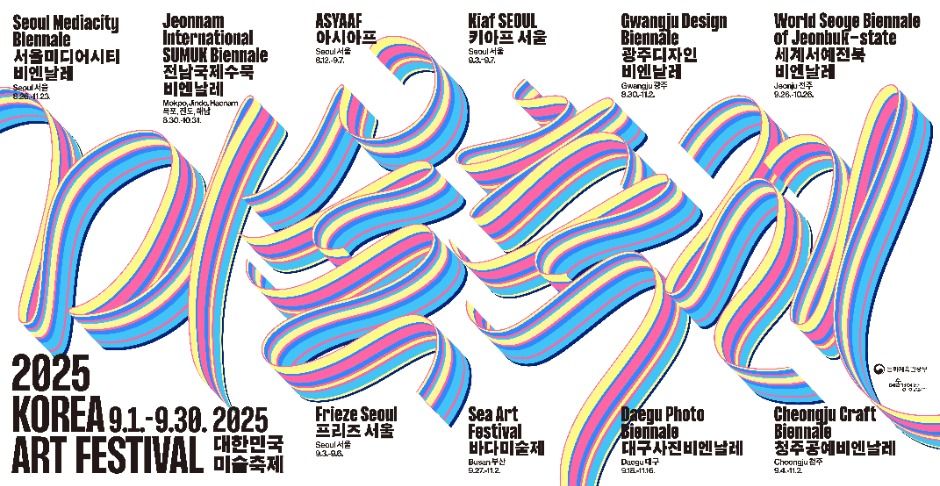
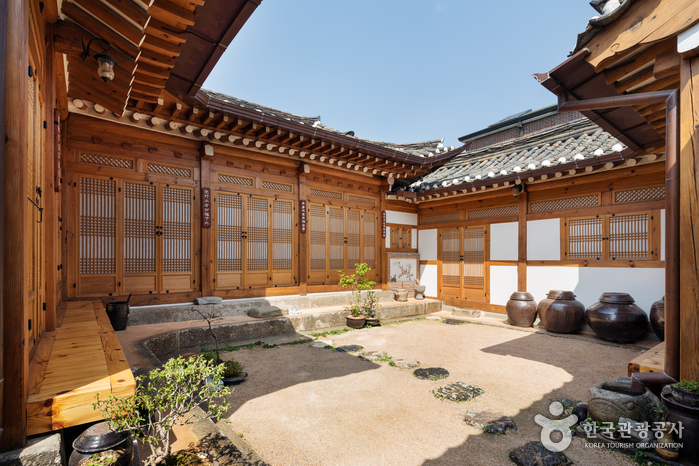
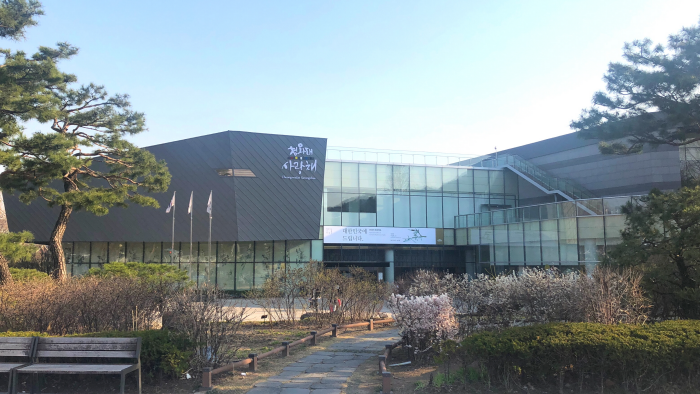
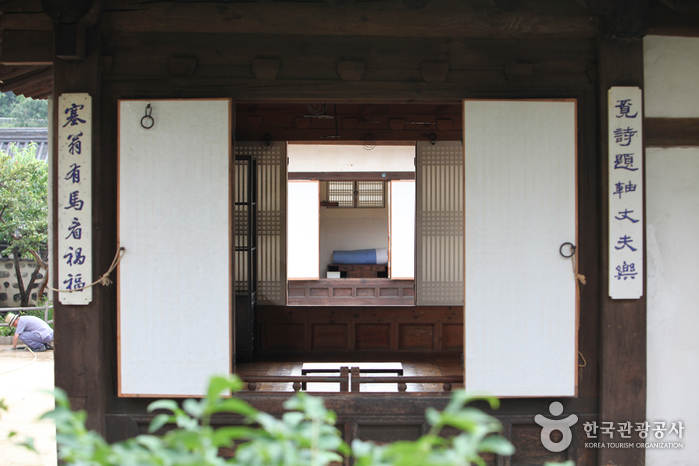
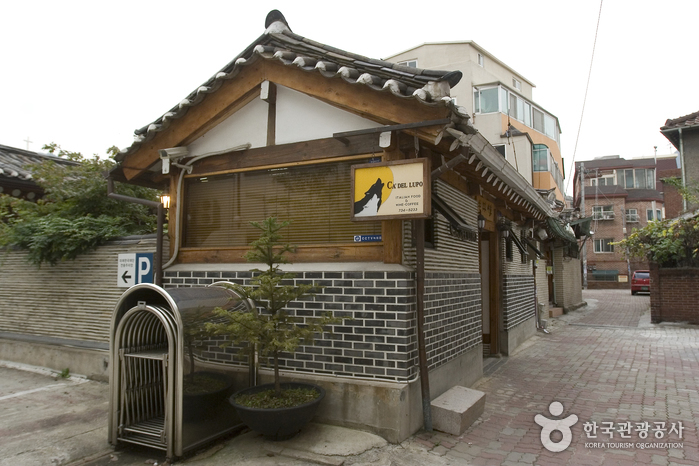

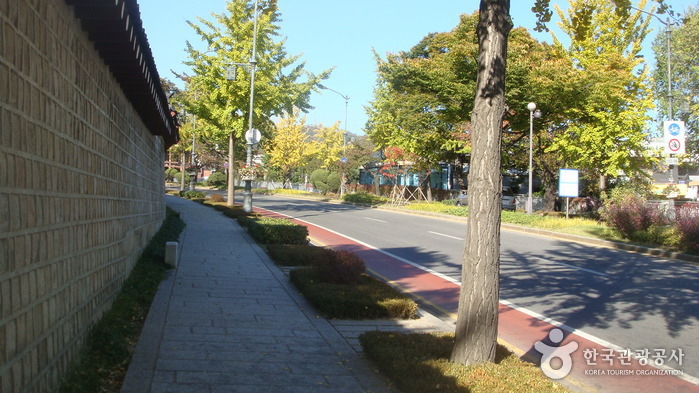
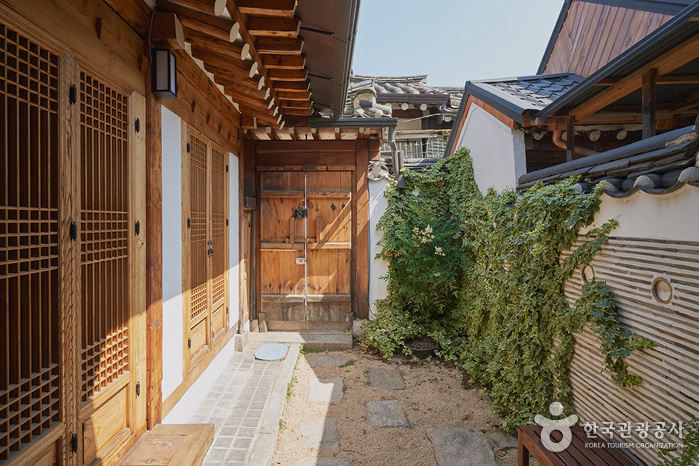
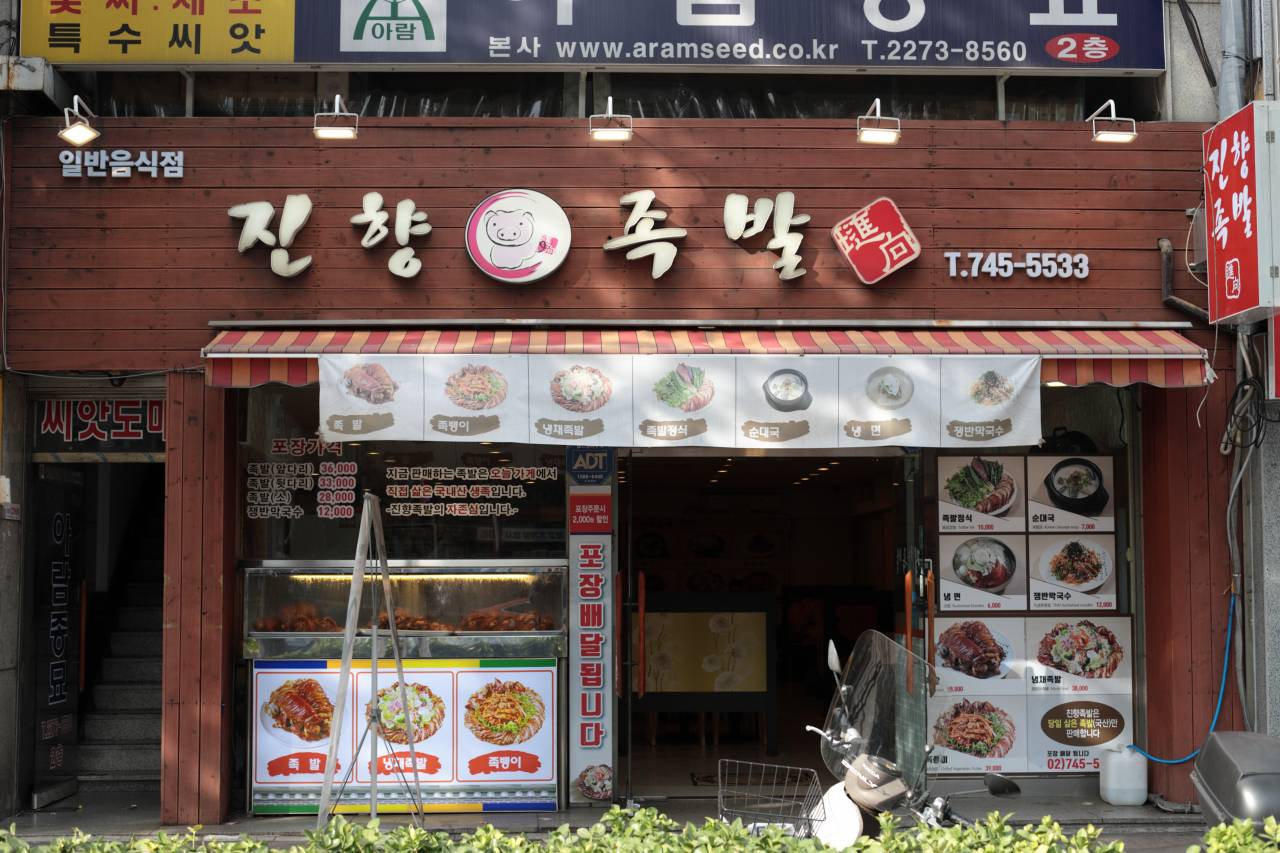
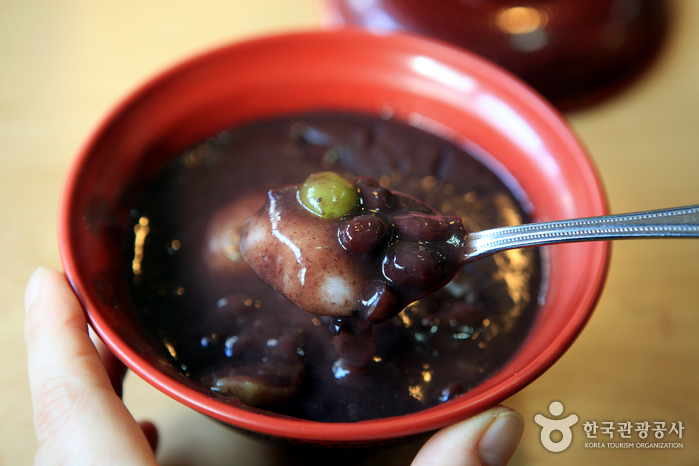
 Français
Français
 한국어
한국어 English
English 日本語
日本語 中文(简体)
中文(简体) Deutsch
Deutsch Español
Español Русский
Русский